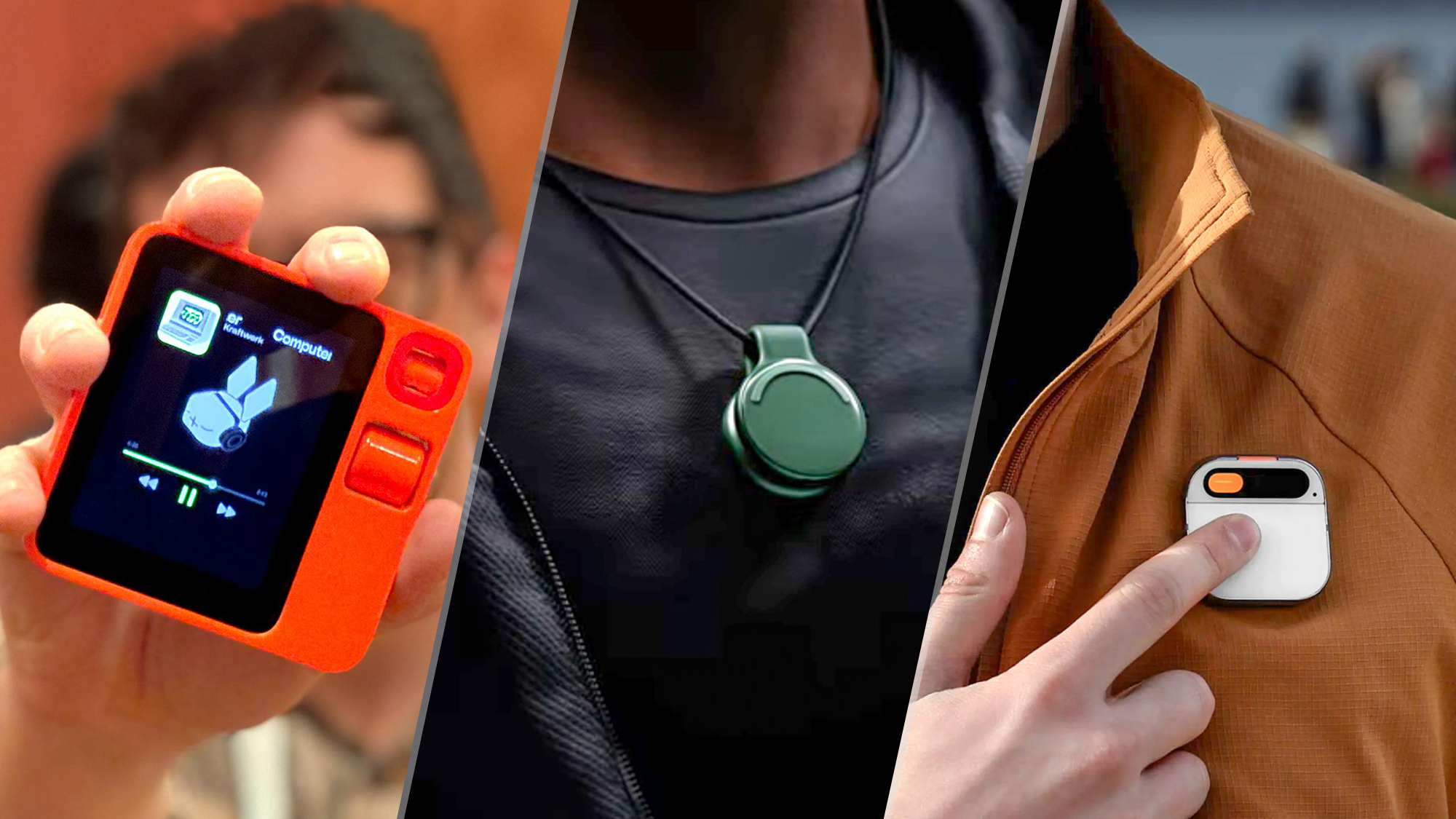The future of personal computing is shifting from screens to AI-powered wearables. In this race, two of the most talked-about gadgets in 2025 are the Humane AI Pin and the Rabbit R1. Both aim to redefine how we interact with technology using voice, cameras, and artificial intelligence—but which one truly delivers?

Let’s explore the design, features, performance, and long-term potential of these two futuristic devices.
🧩 Design & Interface: Screenless vs Handheld
Humane AI Pin
The Humane AI Pin is a minimalist clip-on wearable with no screen. Instead, it uses a laser projector to display information onto your hand or nearby surface. It relies entirely on voice, gestures, and touch, offering a futuristic “screenless” interaction model.
Rabbit R1
The Rabbit R1, in contrast, is a pocket-sized handheld device with a 2.88″ touchscreen, a scroll wheel, and a rotating camera. While also built for voice interaction, it keeps a traditional display for backup control and visual feedback.
📊 Verdict: Rabbit R1 feels more practical for everyday use. The AI Pin is sleek but suffers from visibility and interaction issues due to its projection-based UI.
🤖 AI Intelligence & Use Cases
Humane AI Pin
Powered by a blend of large language models, the AI Pin can:
- Summarize calls/messages (Catch Me Up)
- Translate languages in real time
- Compose messages, answer questions
However, reviews noted inconsistent performance, slow response time, and frequent errors. Its “always-listening” model also raised privacy concerns.
Rabbit R1
Built on Rabbit OS and a unique Large Action Model (LAM), R1 shines in:
- Performing app-like tasks through voice (ordering food, scheduling)
- Controlling services like Spotify, Uber, and more
- Fun camera filters and on-device customization
It acts more like a smart assistant with app control powers rather than just a chatbot.
📊 Verdict: Rabbit R1 currently offers more reliable, task-based performance—a key factor for regular users.
⚙️ Performance, Battery & Real-World Usability
Humane AI Pin
Early adopters reported:
- Laggy interactions
- Short battery life
- Frequent overheating
- Device becoming nearly unusable after launch
By early 2025, Humane discontinued the product, and cloud services were shut down—rendering the Pin a failed experiment.
Rabbit R1
While it had a rough launch in early 2024 with limited functions, frequent updates have improved its performance significantly:
- Faster responses
- More integrations
- Better camera features
It still isn’t perfect but is now seen as a quirky, fun, and evolving AI companion.
📊 Verdict: R1 wins in longevity and continued development. The Humane AI Pin is no longer supported.
💰 Price & Value for Money
| Device | Launch Price | Subscription | Status |
|---|---|---|---|
| Humane AI Pin | $699 + $24/month | Mandatory cellular plan | Discontinued |
| Rabbit R1 | $199 | No subscription needed | Actively updated |
📊 Verdict: Rabbit R1 is far more affordable and active in the market.
🔮 So, What’s the Future of Wearable AI?
These two devices highlight the trial-and-error phase of the wearable AI revolution. While Humane’s vision was futuristic, its execution failed. Rabbit R1 took a more grounded approach with a device that blends old (screen) and new (AI voice assistant).
As wearable AI continues to evolve, the future likely belongs to:
- Smart glasses (like Meta Ray-Bans or Apple Vision Pro)
- Voice-first wearables with reliable privacy and utility
- Devices that augment, not replace, smartphones
✅ Final Verdict: Who Wins — Humane AI Pin or Rabbit R1?
- 🛑 Humane AI Pin: Ambitious but short-lived. Conceptually exciting, but failed in execution and is now discontinued.
- ✅ Rabbit R1: Affordable, improving steadily, and still supported. A playful glimpse into what AI wearables could become.
- 📢Don’t forget to like, share, and subscribe to G Cloud Techphile on YouTube for more tutorials!
📢 Click here to join the channel and be part of a tech-driven community. Don’t miss out on exciting updates!
